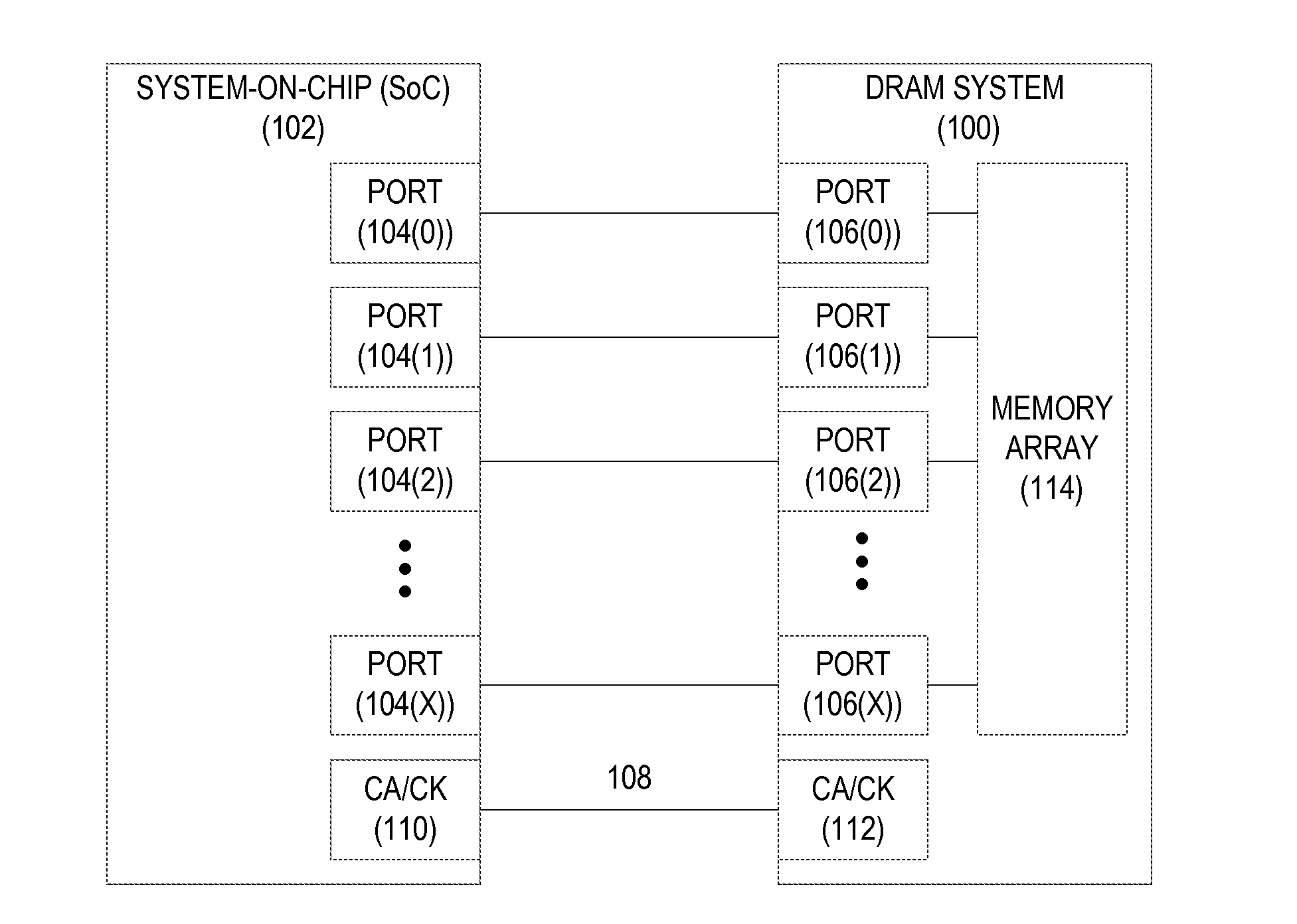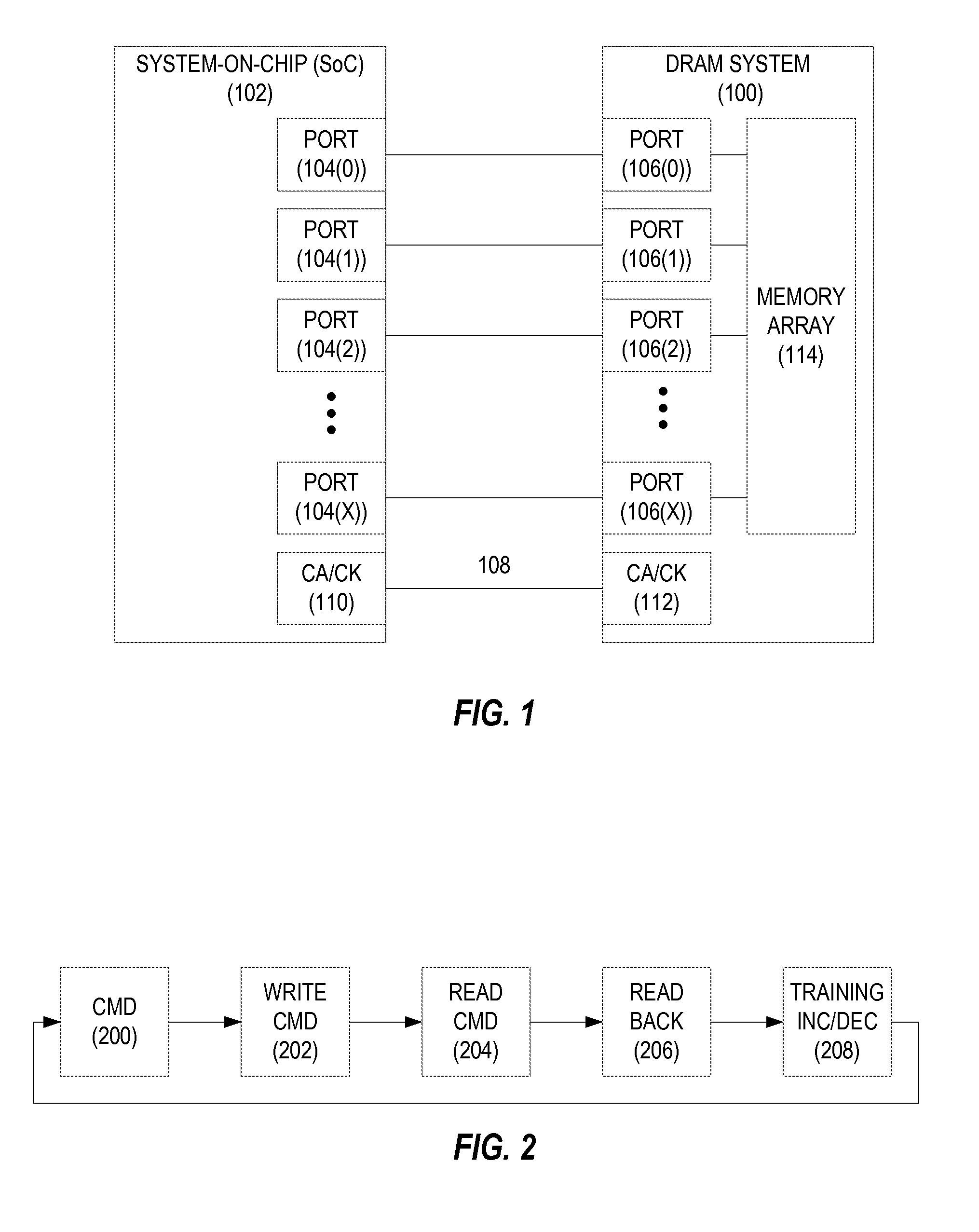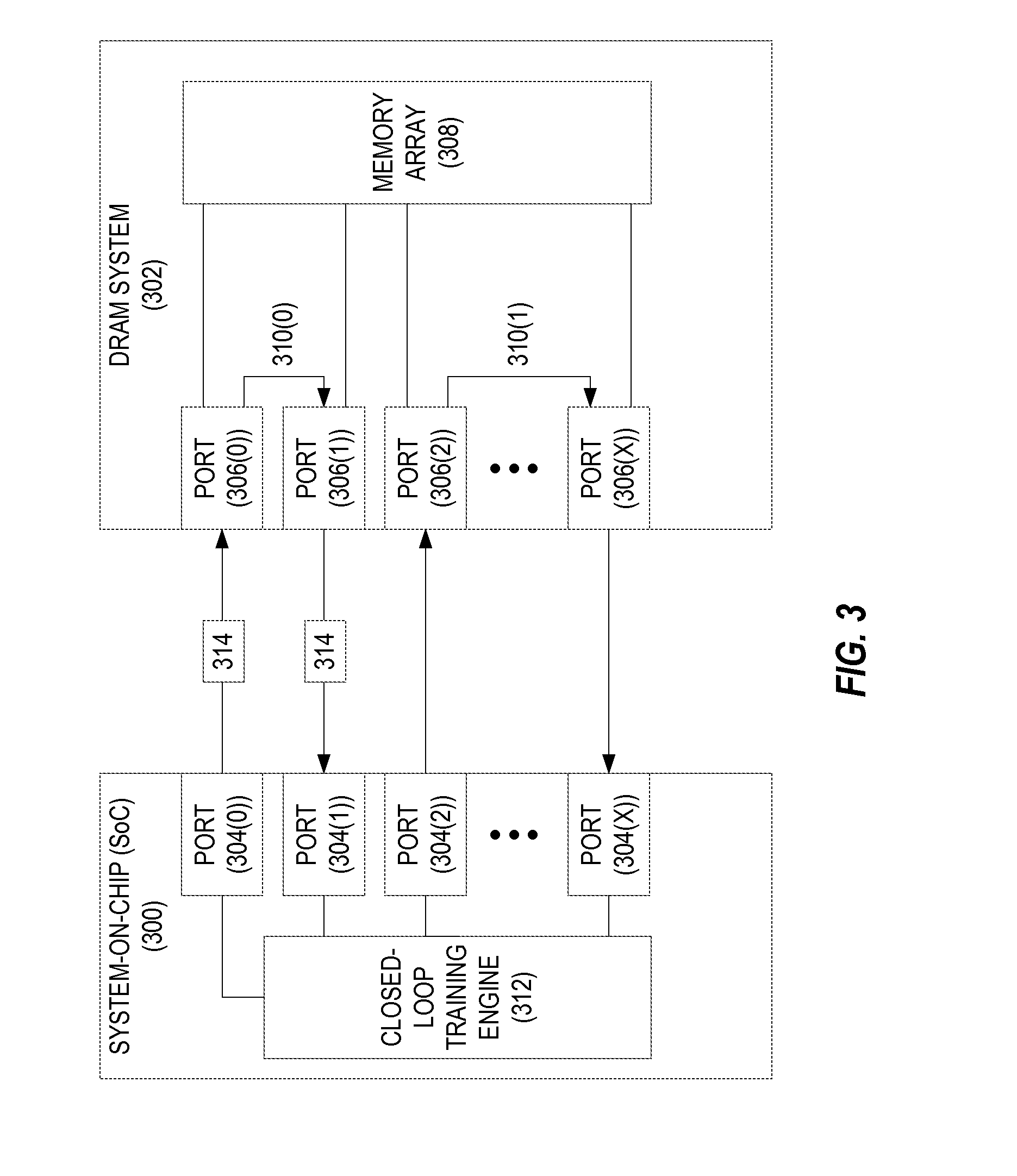Providing memory training of dynamic random access memory (DRAM) systems using port-to-port loopbacks, and related methods, systems, and apparatuses
a dynamic random access memory and memory technology, applied in the field of memory systems, can solve the problems of process may require substantial boot memory to implement, memory loses whatever data was present in the dram, and produces imperfect drams, etc., and achieves the effect of reducing boot memory usage and training faster
- Summary
- Abstract
- Description
- Claims
- Application Information
AI Technical Summary
Benefits of technology
Problems solved by technology
Method used
Image
Examples
Embodiment Construction
[0018]With reference now to the drawing figures, several exemplary aspects of the present disclosure are described. The word “exemplary” is used herein to mean “serving as an example, instance, or illustration.” Any aspect described herein as “exemplary” is not necessarily to be construed as preferred or advantageous over other aspects.
[0019]Aspects disclosed herein enable providing memory training of dynamic random access memory (DRAM) systems using port-to-port loopbacks. Related methods, systems, and apparatuses are also disclosed. In an exemplary aspect, a first port within a DRAM system is coupled to a second port via a loopback connection. A training signal is sent to the first port from a System-on-Chip (SoC) and passed to the second port through the loopback connection without needing to be written to or read from a memory array of the DRAM system. The training signal is then returned to the SoC, where it may be examined by a closed-loop training engine of the SoC. A trainin...
PUM
 Login to View More
Login to View More Abstract
Description
Claims
Application Information
 Login to View More
Login to View More - R&D
- Intellectual Property
- Life Sciences
- Materials
- Tech Scout
- Unparalleled Data Quality
- Higher Quality Content
- 60% Fewer Hallucinations
Browse by: Latest US Patents, China's latest patents, Technical Efficacy Thesaurus, Application Domain, Technology Topic, Popular Technical Reports.
© 2025 PatSnap. All rights reserved.Legal|Privacy policy|Modern Slavery Act Transparency Statement|Sitemap|About US| Contact US: help@patsnap.com



